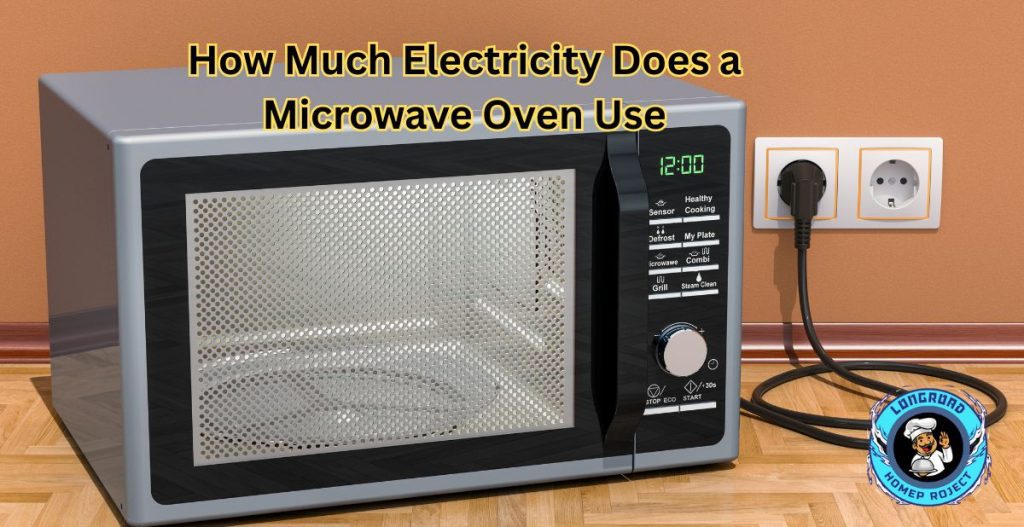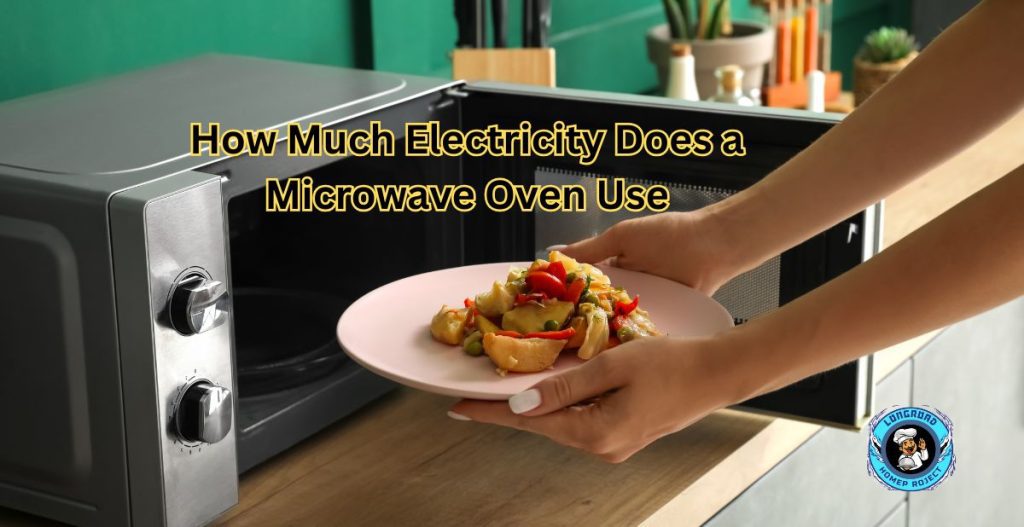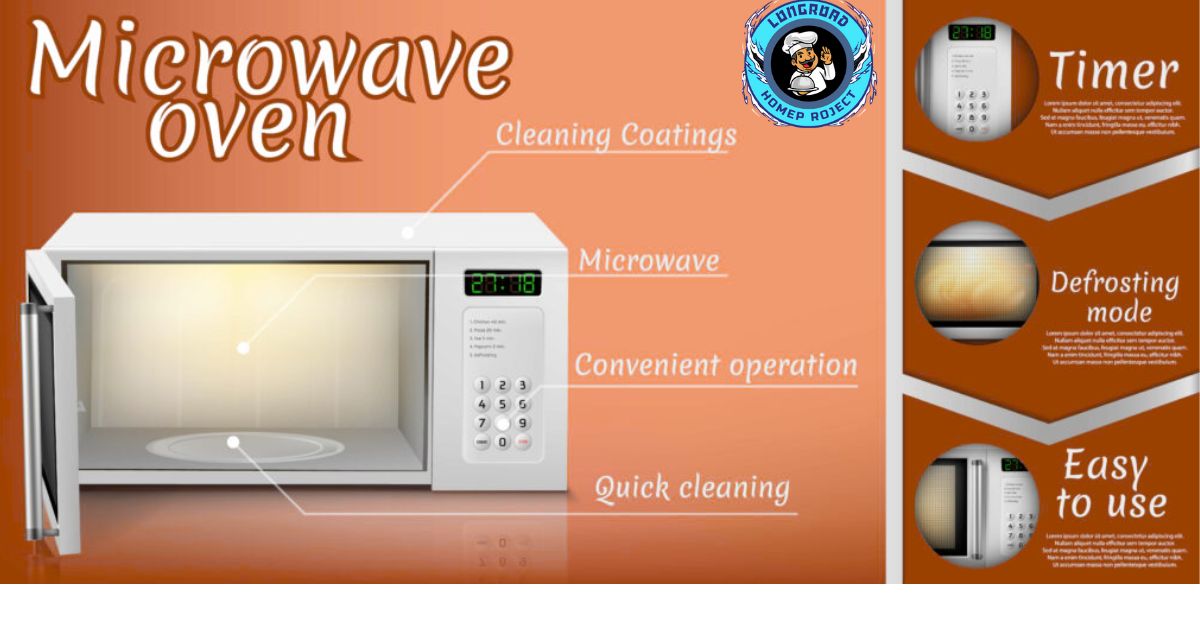As an Amazon Associate I earn from qualifying purchases.
I still remember the first month I moved into my new apartment—the electricity bill shocked me. I couldn’t quite figure out why it was so high, until I started paying attention to my kitchen appliances. That’s when I realized my microwave, which I used daily, was silently consuming more energy than I expected. If you’ve ever wondered how much electricity does a microwave oven use, you’re not alone.
In this guide, we’ll break down everything you need to know about microwave oven electricity consumption—from understanding wattage, calculating power usage, to tips on running your microwave efficiently. By the end, you’ll know exactly how to measure energy use, save on bills, and make your kitchen appliances more energy-smart.
Whether you’re a student, a busy professional, or someone simply curious about household energy costs, this article will provide clear, actionable insights. Plus, I’ll share practical examples and real-life calculations to make it easy to understand—even if you’re not a tech expert.
How Microwave Ovens Consume Electricity
Microwave ovens might seem simple—they heat food in minutes—but behind the scenes, they’re converting electricity into high-frequency energy to cook your meals. At the heart of every microwave is a magnetron, a device that transforms electrical energy into microwaves. These microwaves excite water molecules in your food, creating heat and cooking your meal from the inside out.
But not all electricity a microwave draws goes directly into cooking. Standby power, sometimes called “phantom load,” is the electricity consumed even when your microwave isn’t actively heating food. This powers digital displays, clocks, sensors, and touchpad lights. While standby consumption is minimal compared to active cooking, it adds up over time, especially in households with multiple kitchen appliances.
To understand how much electricity a microwave uses, it’s important to consider its wattage. Most home microwaves range from 600 to 1,200 watts, which indicates how much power the oven draws while running. For example, a 1,000-watt microwave running for 10 minutes uses roughly 0.17 kilowatt-hours (kWh) of electricity. Higher wattage microwaves cook faster but may consume more energy per minute, while lower wattage models take longer but draw less power at a time.
By knowing the wattage and typical usage patterns, you can estimate your microwave oven electricity consumption more accurately and identify opportunities to save on your energy bill.
Understanding Microwave Wattage
Microwave wattage is a measure of how much power a microwave oven draws to cook food. In simple terms, the higher the wattage, the faster your microwave can cook or reheat meals. This is why a 1,200-watt microwave can heat leftovers much quicker than a 700-watt model. However, higher wattage also means higher electricity consumption per minute, so understanding wattage is essential for both cooking efficiency and energy savings.
Most microwaves have two key wattage numbers: input wattage and output cooking wattage. Input wattage is the total electricity the appliance draws from your outlet. Output cooking wattage is the effective power used to heat your food, which is usually about 60–70% of the input due to energy lost as heat in the magnetron and other internal components. For example, a microwave rated at 1,000 watts output may actually draw 1,500 watts from your power source. Knowing this difference helps when calculating microwave oven electricity consumption and estimating your energy bill accurately.
To make it easier to manage, you can refer to a microwave wattage chart or use a microwave wattage time converter. These tools help you adjust cooking times if you switch ovens or want to understand how power affects cooking duration. For instance, a 700-watt microwave will take roughly 40% longer to cook the same dish compared to a 1,200-watt microwave, which can help you plan both your meals and energy usage.
By understanding wattage, you not only optimize cooking times but also gain a clear picture of how your microwave contributes to overall electric consumption in your kitchen.

Average Electricity Use by Microwave Size & Type
Microwave electricity consumption varies widely depending on size, type, and wattage. Understanding how much energy different models use can help you choose the most efficient option and estimate your electricity costs more accurately.
Compact Microwaves (600–800 W)
Compact microwaves are perfect for small kitchens, dorm rooms, or single-serving meals. These models typically draw 600–800 watts while running, translating to approximately 0.6–0.8 kWh per hour if used continuously. For short cooking times—say, 5–10 minutes for reheating—your electricity usage is minimal, usually 0.05–0.15 kWh per session. This makes compact microwaves highly energy-efficient for quick tasks, though they take slightly longer to cook compared to higher-wattage units.
Standard Countertop Microwaves (900–1200 W)
Most households use standard countertop microwaves in the 900–1,200 watt range. These models balance speed and efficiency, consuming roughly 0.9–1.2 kWh per hour at full power. A typical 10-minute cooking session uses around 0.15–0.2 kWh, which is only a fraction of your monthly electricity bill. These microwaves are ideal for everyday cooking and reheating larger portions while maintaining relatively low electricity costs.
High-End or Commercial Microwaves (1200–1800 W+)
High-end or commercial-grade microwaves, often used in restaurants or busy kitchens, operate at 1,200–1,800 watts or more. They can heat food extremely fast, but electricity consumption is higher—approximately 1.2–1.8 kWh per hour at full power. A typical 10-minute cooking session will consume 0.2–0.3 kWh, making these units less energy-efficient for everyday home use unless speed is a priority.
Example for Comparison:
- A compact 700 W microwave reheating a meal for 10 minutes uses about 0.12 kWh.
- A standard 1,100 W microwave for the same time uses about 0.18 kWh.
- A commercial 1,500 W microwave uses roughly 0.25 kWh for 10 minutes.
By understanding these differences, you can better estimate your microwave oven electricity consumption based on your appliance type and daily usage.
Calculating Electricity Cost of Microwave Usage
Knowing how much electricity your microwave uses is helpful, but translating that into actual cost gives you a clearer picture of its impact on your energy bill. Here’s a simple, step-by-step guide to calculate it.
Convert Watts to Kilowatt-Hours (kWh)
Electricity is billed in kilowatt-hours (kWh). To convert your microwave’s wattage into kWh, use this formula: kWh=Wattage×Hours of Use1000\text{kWh} = \frac{\text{Wattage} \times \text{Hours of Use}}{1000}kWh=1000Wattage×Hours of Use
For example, if you have a 1,200-watt microwave and use it for 15 minutes (0.25 hours): kWh=1200×0.251000=0.3 kWh\text{kWh} = \frac{1200 \times 0.25}{1000} = 0.3 \text{ kWh}kWh=10001200×0.25=0.3 kWh
This means that a 15-minute session consumes 0.3 kWh of electricity.
Multiply by Your Local Electricity Rate
Once you know the kWh used, multiply it by your electricity cost per kWh. For instance, if your electricity rate is $0.15 per kWh: Cost=0.3 kWh×0.15=$0.045\text{Cost} = 0.3 \text{ kWh} \times 0.15 = \$0.045Cost=0.3 kWh×0.15=$0.045
So, heating your meal for 15 minutes costs just under five cents.
Use Tools for Quick Conversion
For frequent calculations or different microwaves, you can use:
- Microwave wattage calculators – Input wattage and cooking time to get kWh and cost.
- Microwave wattage converters – Convert between different wattages to adjust cooking times and estimate electricity use.
This approach works for any microwave, whether compact, standard, or commercial. It also helps you plan energy-efficient cooking sessions and compare the cost-effectiveness of different models.

Energy-Saving Tips for Microwave Use
Microwaves are convenient, but there are simple ways to reduce electricity consumption without sacrificing performance:
- Avoid Overcooking or Repeated Heating Cycles
Cooking food longer than necessary wastes energy. Check food halfway through and adjust time as needed to prevent extra electricity usage. - Use Smaller Microwaves for Small Meals
If you’re only heating a snack or a single portion, a compact microwave (600–800 W) uses less electricity than a large countertop model. - Cover Food to Reduce Cooking Time
Covering food traps steam and spreads heat evenly, reducing overall cooking time and energy use. - Unplug Microwave When Not in Use
Even in standby mode, microwaves consume a small amount of electricity. Unplugging or using a power strip can eliminate phantom energy drain.
Common Misconceptions About Microwave Power Consumption
Understanding how microwaves use electricity can prevent confusion and myths:
- Microwaves Use More Electricity Than Ovens (Debunked)
Microwaves cook food faster and more efficiently, typically consuming less electricity per meal compared to conventional ovens. - Standby Mode Drains Significant Energy
While microwaves do use a tiny amount of standby power, it is minimal compared to active cooking—a few cents per month at most. - Cooking Frozen Food Always Consumes More Electricity
Frozen meals may take slightly longer, but the difference in electricity use is usually negligible, especially if the microwave wattage is high.
By following these energy-saving tips and understanding common myths, you can maximize efficiency and keep electricity costs low while using your microwave.
Personal Experience – How I Reduced My Microwave Energy Bills
A few years ago, I noticed my electricity bills creeping higher every month. I realized I had been using my standard 1200 W countertop microwave for every small meal, even reheating a single cup of soup. Curious, I decided to track my microwave usage and electricity consumption.
Here’s what I learned:
- Swapping to a Compact Microwave for Small Tasks
For reheating snacks or single portions, I switched to a 600–800 W compact microwave. The cooking times were slightly longer, but the energy savings were immediate. - Timing Meals Strategically
Instead of multiple short heating sessions, I started batch-heating foods when possible. For example, warming leftovers all at once reduced overall cooking time and electricity use. - Using Covers and Proper Containers
I began covering dishes with microwave-safe lids or vented wraps. This trapped steam and reduced cooking time, further cutting electricity consumption. - Unplugging During Standby
Though minor, unplugging my microwave when not in use eliminated phantom energy drain, contributing to small but noticeable savings over a year.
Lessons Learned:
- Even small changes in microwave usage can reduce energy bills.
- Choosing the right wattage for the task is more important than using the biggest microwave by default.
- Paying attention to cooking techniques (covering, batch heating) directly impacts energy efficiency.
By applying these simple strategies, I lowered my microwave-related electricity costs and still enjoyed the same convenience and speed.

FAQs
1. How many watts does a typical microwave use?
Most household microwaves range from 600 W to 1200 W, with compact models on the lower end and high-power or commercial units at the top.
2. How much electricity does a microwave use per hour?
A 1000 W microwave running for 1 hour continuously consumes 1 kWh of electricity. Actual usage per meal is usually far less, often 0.1–0.3 kWh.
3. Is a 1000 W microwave more expensive to run than a 700 W microwave?
Yes, if used for the same amount of time. However, the higher wattage microwave cooks faster, which can offset some of the energy cost.
4. Can using a microwave save electricity compared to an oven?
Generally, yes. Microwaves cook faster and with less energy, especially for small portions, making them more efficient than conventional ovens for reheating or small meals.
5. How do I calculate my microwave’s energy consumption?
Use the formula:
kWh = (W × hours of use) ÷ 1000
Example: a 900 W microwave used for 10 minutes = 0.15 kWh.
6. Does a microwave consume power when off?
Some microwaves use a small amount of electricity in standby mode, but unplugging or switching off at the wall can eliminate this “phantom load.”
7. Are commercial microwaves more energy-efficient?
They often have higher wattage but are designed for continuous, high-volume cooking, which can be more efficient in a commercial setting. For home use, standard microwaves are usually more economical.
8. Can I reduce electricity usage with microwave cooking techniques?
Yes! Covering food, batch cooking, using smaller microwaves for small portions, and avoiding repeated heating cycles all lower energy consumption.
Conclusion
Understanding how much electricity a microwave oven uses empowers you to make smarter, energy-efficient choices in the kitchen. Key takeaways:
- Wattage matters: choose the right microwave size for the task.
- Calculating kWh helps estimate actual energy costs.
- Efficient cooking techniques (covering food, batch heating, unplugging when not in use) save both money and electricity.
By monitoring your microwave usage and applying these tips, you can reduce your energy bills, lower your environmental impact, and still enjoy the convenience of quick meals.
As an Amazon Associate I earn from qualifying purchases.
